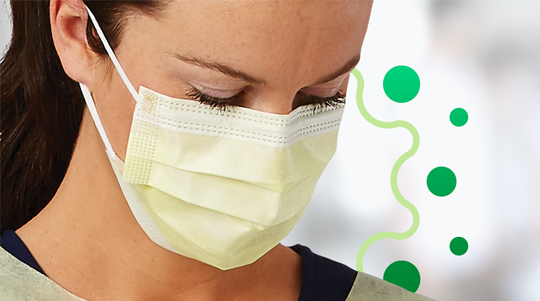PAPR respirators vs N95: An air-purifying respirator guide
Learn the levels of respiratory devices and uses to keep people safe.
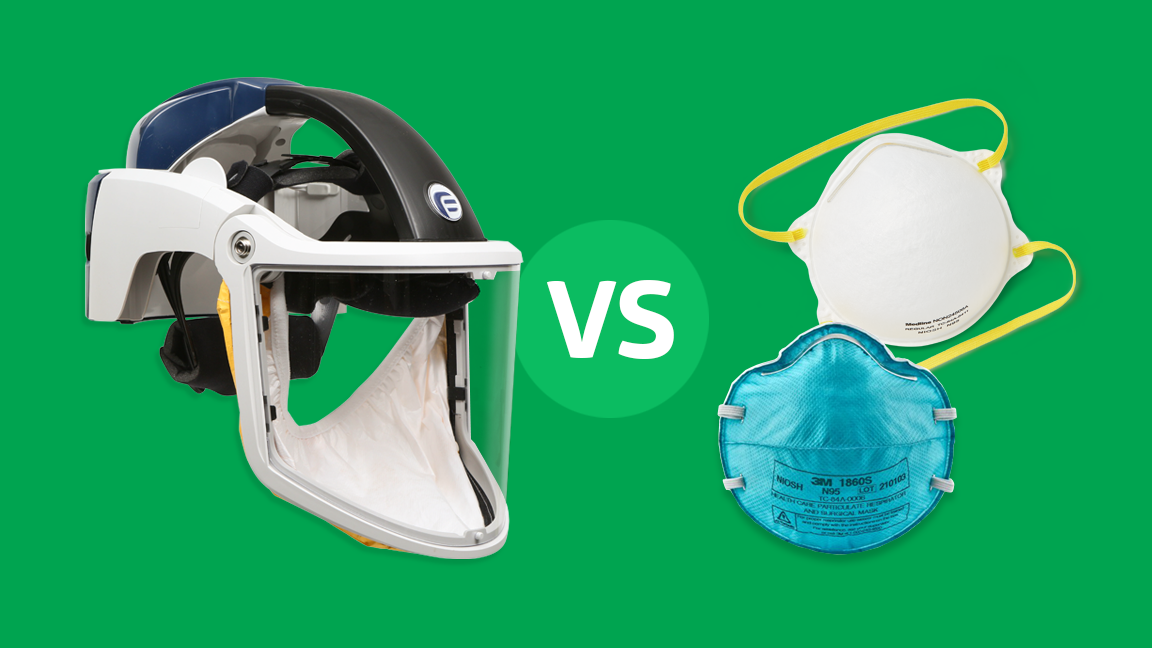
Looking to build your knowledge of the different kinds of respiratory protection? You’re not alone. From surgical masks to powered air-purifying respirators (PAPRs) to N95s, it can be difficult to choose the right device.
For infection preventionists (IPs) and healthcare leaders across the continuum, keeping up with the latest advances in respiratory protection technology is critical to helping staff, patients and residents stay safe—especially in an environment where sneezing, coughing and exhaling germs are an everyday occurrence.
Understanding the differences between the most common devices and ensuring that healthcare workers can access and wear them properly are key to preventing the spread of healthcare-associated infections (HAIs).
Less than 15 minutes
is typically devoted to training healthcare workers on respiratory protection each year.1
Let’s break down the different types and levels of respirator protection.
Air-purifying respirators (APRs): Advanced protection from the smallest particles
The APR category of personal protective equipment includes filtering facepiece respirators (FFRs) and PAPRs. What distinguishes APRs from face masks is that they provide a known level of protection, which is regulated by NIOSH. These devices may use filters, cartridges or canisters to remove hazards from the air the wearer inhales.2
IPs rely on these commonly used APRs to safeguard healthcare workers:
- N95 FFRs
- Surgical N95 FFRs
- Powered APRs
These devices remove aerosols (droplets and solid particles), vapors, gases or a combination of contaminants from the air. Unlike face masks, they can protect against smaller particles.2
The appropriate respirator will vary based on the situation and the environmental contaminants that are present.
Filtering facepiece respirators (FFRs): Achieve a filtration level of 95% or higher
FFRs are disposable devices that cover the mouth and nose and protect users by filtering particles out of the air. NIOSH will approve FFRs that offer a minimal level of filtration of 95%. N95s are the most well-known among this category of respiratory protection.3
They filter out particles such as:
- Fumes4
- Dust4
- Mist4
The right FFRs will depend on the environmental contaminants that are present. Healthcare workers use these devices when a basic face mask will not provide adequate protection.
Please note: As everyone learned in the early days of the COVID-19 pandemic, these disposable devices may be in short supply during disease outbreaks. While the healthcare supply chain has recovered, facilities can plan ahead to ensure that staff are protected in the event of a public health emergency.
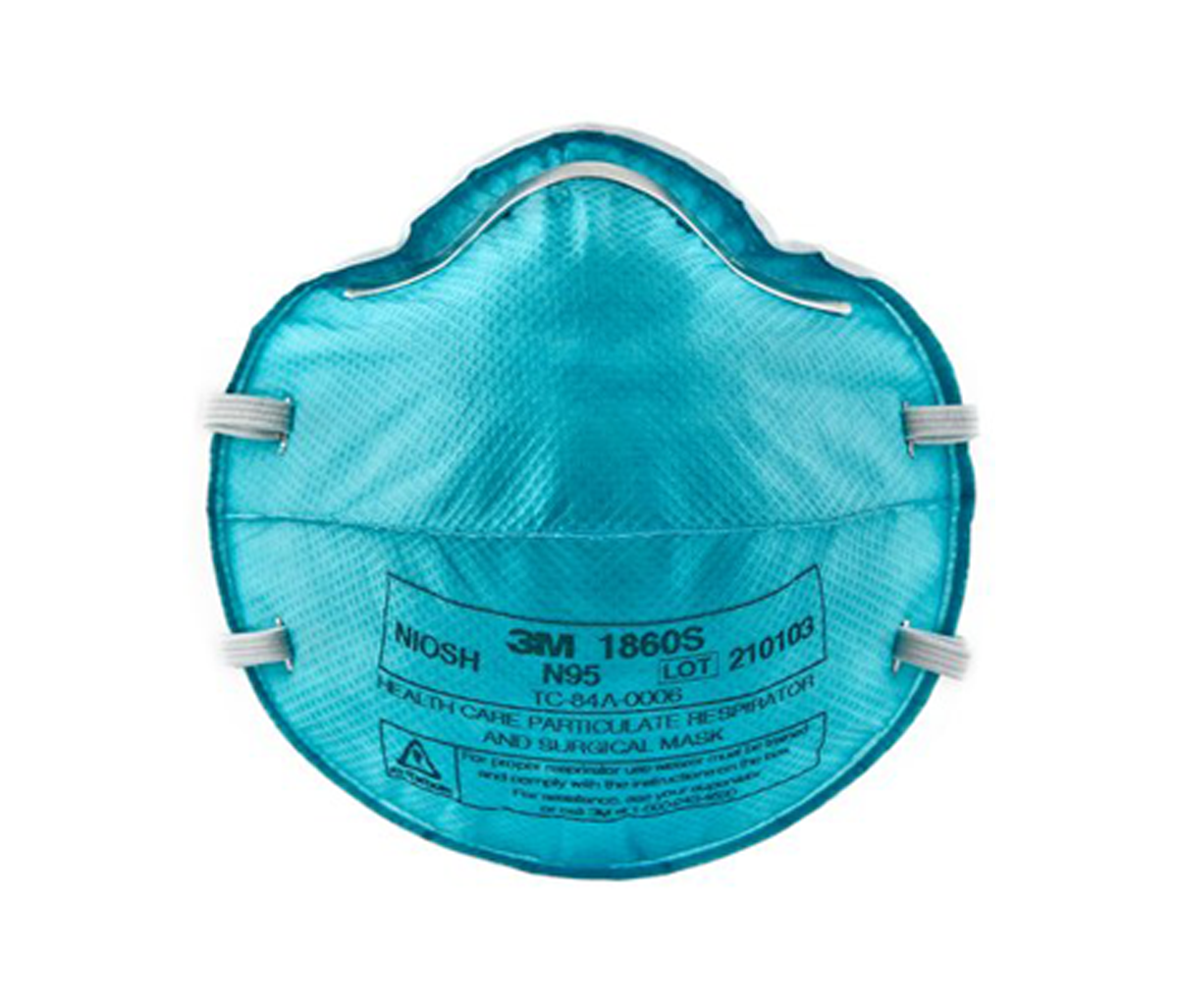
N95 FFRs
What it is
These tightfitting respirators filter out particles—removing at least 95% of them—from the wearer’s inhaled airstream.3
What it protects against
N95 FFRs are capable of filtering out large and very small (0.3 micron) particles, including viruses and bacteria.5
How it’s used
Healthcare professionals use N95 FFRs when caring for patients with confirmed or suspected infectious disease. They’re used when performing procedures that can generate aerosols or around patients who can transmit disease through airborne germs.
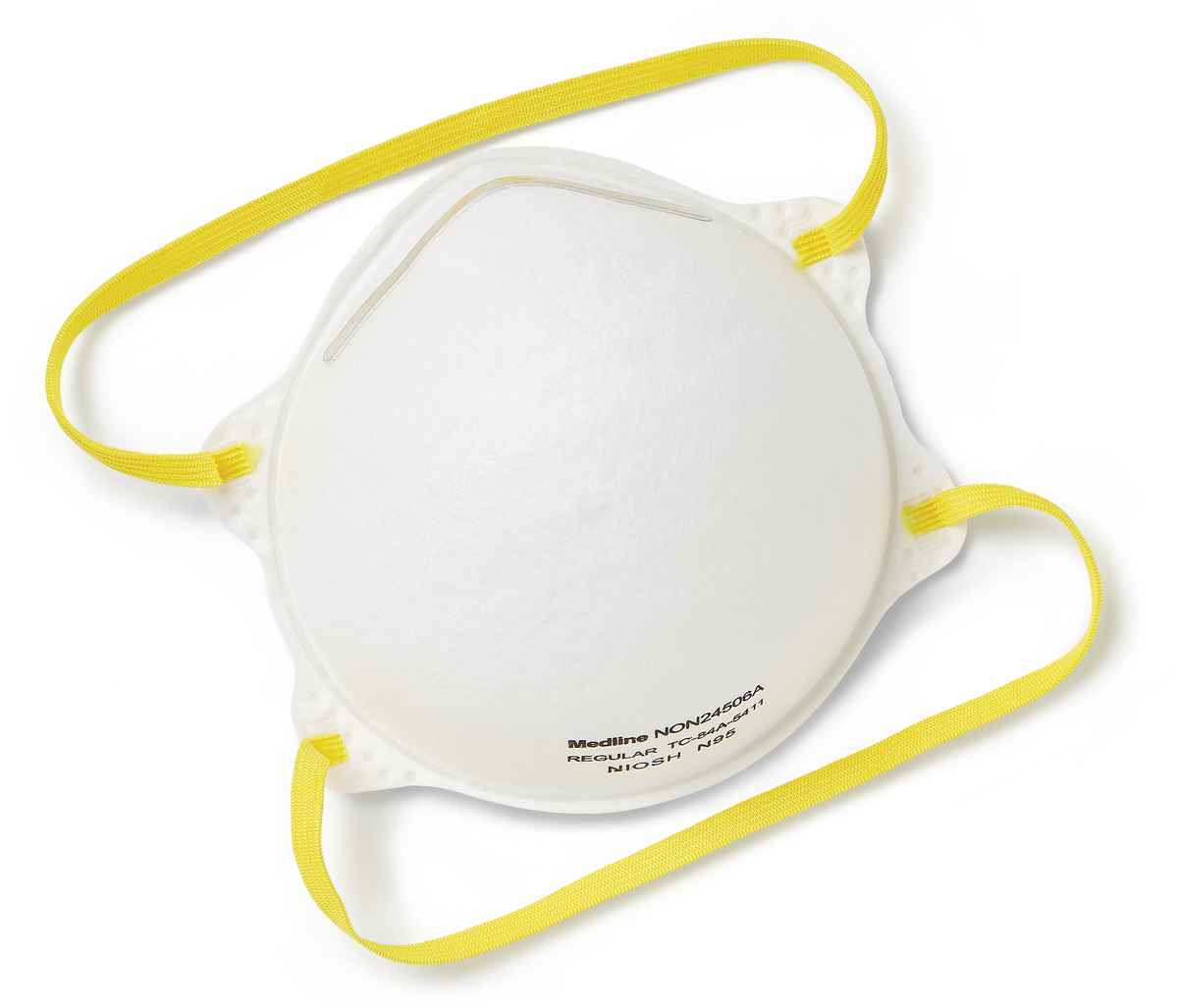
Surgical N95 FFRs
What it is
Surgical N95s—also called a medical respirator—are a type of N95 FFRs.
What it protects against
- Airborne hazards5
- Splashes5
- Sprays5
How it’s used
Surgical N95 FFRs should be used only in healthcare settings. Caregivers wear them when they need a known level of protection from both fluid and airborne hazards.
When there are shortages, facilities should limit the use of these devices. Reserve them for staff in sterile fields who may be exposed to these hazards in operative or procedural settings:
- High-velocity splashes and sprays
- Splatters of blood or bodily fluids
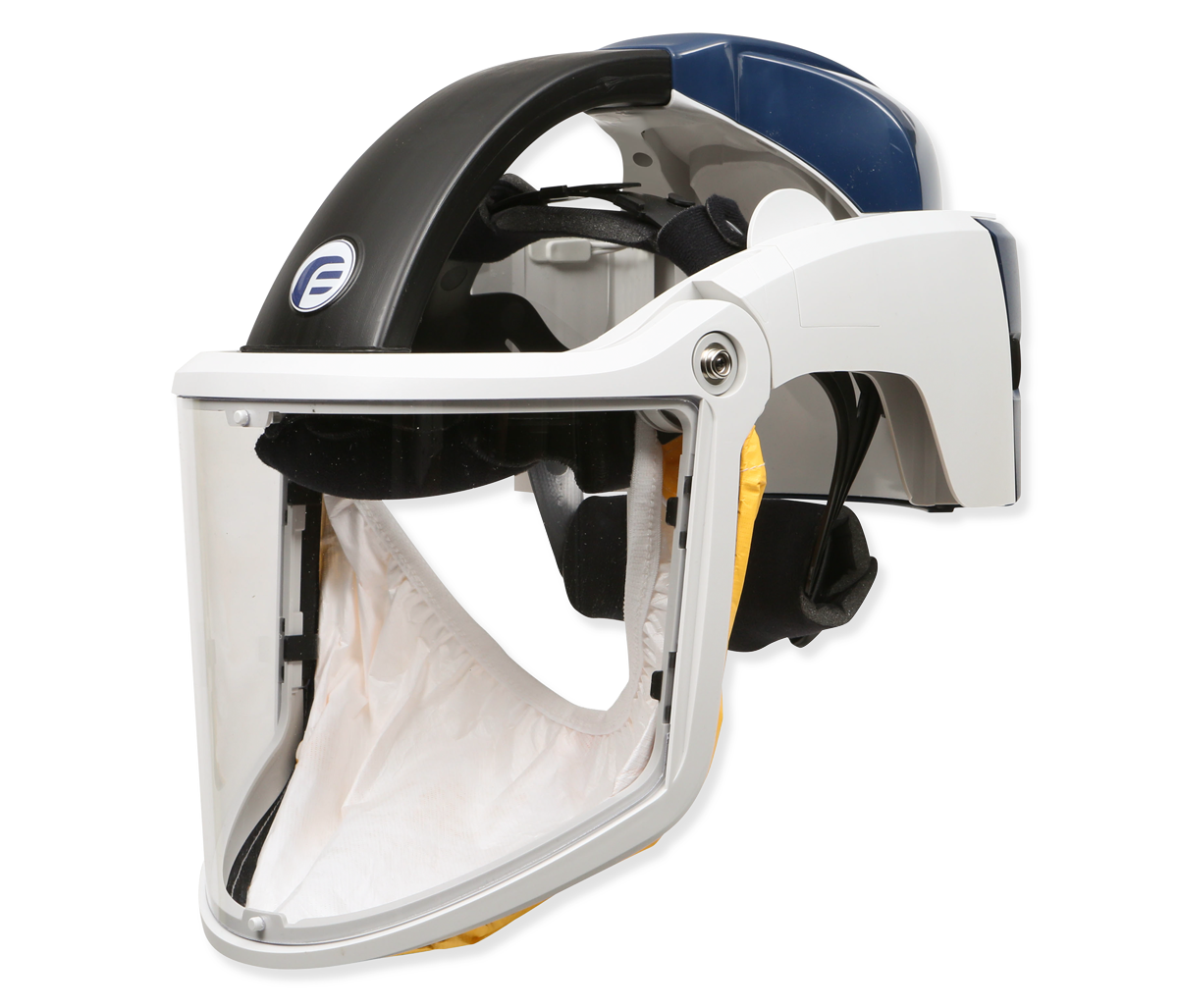
Powered air-purifying respirators (PAPRs): A reusable alternative to FFRs
What it is
PAPRs are a reliable—and reusable—form of respiratory protection that can play an important role in a facility’s approach to stopping the spread of disease.
Unlike FFRs that rely on the user’s breathing to filter the air, this device uses a blower or fan to pull air through a cartridge or canister. This process removes hazardous particles and brings filtered air into the breathing zone of the wearer. It may be easier for healthcare workers to breathe while using this device. In addition, a fit test is not required for PAPRs with loose-fitting headgear such as hoods and helmets.5
PAPRs may include the following components:
- Loose-fitting hood or helmet
- Tight-fitting facepiece
- Motor-blower unit
- Battery
- Filter or cartridge
What it protects against
PAPRs have a higher assigned protection factor (APF), ranging from 25 to 1,000, and due to HE filters, PAPRs offer a great filtration efficiency compared to N95s.5
Some PAPRs with hoods or helmets offer protection from splashes, ranging from limited to significant, for the face and eyes, and models with cartridges can protect against particulates, gases and vapors.
How it’s used
PAPRs are frequently used in settings where caregivers could be exposed to aerosolized pathogens that cause acute respiratory infections. Additionally, most PAPR components can be cleaned, disinfected, reused and shared, making them a valuable tool when FFRs are in short supply.
We’re seeing more and more facilities have a few PAPRs on hand for times when workers haven’t done or passed a fit test or just in case N95s become difficult to access.
Hailey Koretz
Medline Associate Product Manager
Why fit testing is important for FFRs
A very close facial fit is key for FFRs to perform optimally and provide the most efficient filtration. When an FFR is worn incorrectly, air can pass through the edges of the respirator when the wearer inhales. IPs perform or train other staff to perform annual “fit testing.”
Any respirator with a tight fitting facepiece is subject to fit testing—that includes FFRs. The purpose of the fit test is to ensure a tight seal and prevent excessive leakage. Staff may only use a make, model, style and size of respirator for which they have been successfully fit tested.
For N95 and surgical N95 FFRs, fit testing is performed using:
- Bitrex®
- Saccharin
- Quantitative test
This testing is an important component of a facility’s respiratory protection program and is regulated by OSHA. Healthcare facilities are required to offer adequate models and sizes of respirators so that all staff have access to comfortable protection that’s properly fitted.
Fit testing is not required for units with loose-fitting headgear such as PAPRs.
Key takeaway
Creating and implementing a comprehensive and effective respiratory protection program is an important aspect of infection prevention. When you know the different kinds of respirators and levels of protection—and plan ahead—healthcare workers will be protected and prepared, even during disease outbreaks.
Reference:
- National Library of Medicine. (2015, May 7). The Use and Effectiveness of Air Purifying Respirators in Health Care: Workshop Summary. https://www.ncbi.nlm.nih.gov/books/NBK294225/
- Centers for Disease Control and Prevention. (2020, October 29). What are Air-Purifying Respirators? https://www.cdc.gov/coronavirus/2019-ncov/hcp/ppe-strategy/air-purifying-respirators-infographic.html
- Centers for Disease Control and Prevention. (2021, September 15). NIOSH-Approved Particulate Filtering Facepiece Respirators. https://www.cdc.gov/niosh/npptl/topics/respirators/disp_part/default.html
- Environmental Health & Safety: UCSC Industrial Hygiene Services. Filtering Facepiece Respirators (Particle Masks N-95 to P-100). https://ehs.ucsc.edu/programs/safety-ih/documents/n95.pdf
- Centers for Disease Control and Prevention. (2021, April 9). Personal Protective Equipment: Questions and Answers. https://www.cdc.gov/coronavirus/2019-ncov/hcp/respirator-use-faq.html#:~:text=An%20N95%20FFR%20is%20a,particles%2C%20including%20bacteria%20and%20viruses.
- Centers for Disease Control and Prevention. (2020, November 3). Considerations for Optimizing the Supply of Powered Air-Purifying Respirators (PAPRs). https://www.cdc.gov/coronavirus/2019-ncov/hcp/ppe-strategy/powered-air-purifying-respirators-strategy.html

